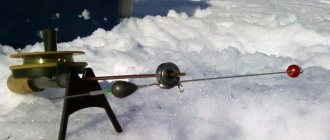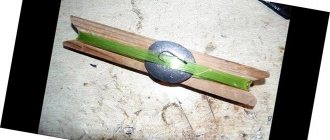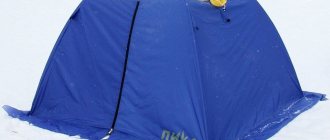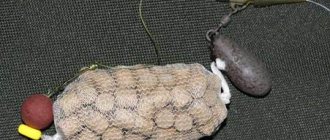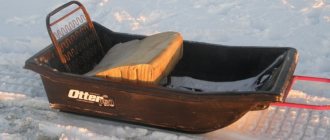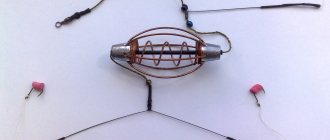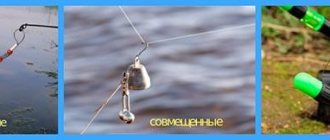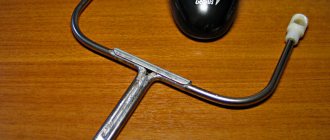Fishing is a creative process based on luck. The catch can be completely unpredictable - either it is a small crucian carp or it is a catfish weighing over 10 kg. If there are no problems with catching small fish, then the large fish, which the angler dragged with his tackle to the shore or to the hole, somehow needs to be pulled out.
A gaff helps solve this problem. If in summer you can take it with a landing net or with your hands, then in winter there is no alternative to a hook. There are two types of gaffs - summer and winter. Summer hooks are more powerful and longer. Their length is about 1.5 meters. Winter gaffs are shorter and more delicate.
Purpose of the hook for fishing
Bagorik is an integral attribute of winter fishing. Any self-respecting angler who catches a predator on the ice in winter will not go fishing without a hook, for the simple reason that pulling a good catch out of a hole with bare hands is very problematic, and sometimes even impossible.
Without a hook it is almost impossible to pull out such predators as pike, pike perch, and burbot. Also, when fishing for bream, carp and perch, it is better to try to use a hook. The hooking technique is as follows: when the fish is brought with its head into the hole, it is hooked with a hook to the lower jaw or gill.
The main requirement for the hook is that it must be reliable and strong in order to withstand the weight of the fish when lifting it from the hole. Some anglers try to make it compact so that it fits in a fishing box. Some boat hooks are made collapsible for this purpose.
Handles in a hook
Making good handles in a fishing hook from available items will not be difficult for you.
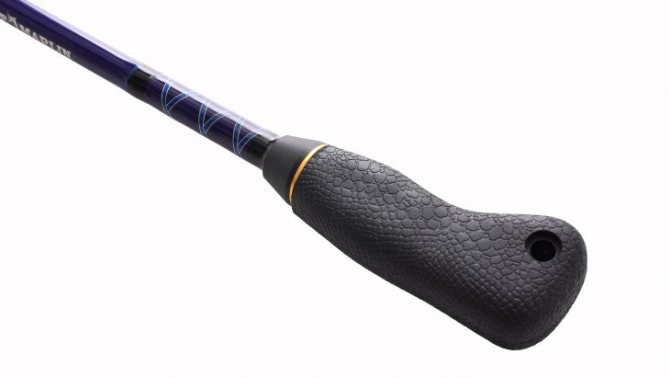
An undeniable advantage is that making such a design is as easy as shelling pears. However, you may not be able to completely avoid contact with cold iron.
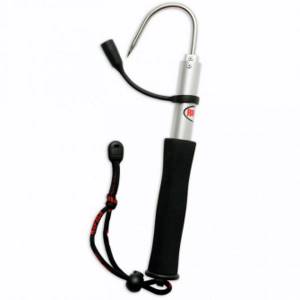
There is another way to make it - make a hole in the handle in the same way, insert a wire and secure it.
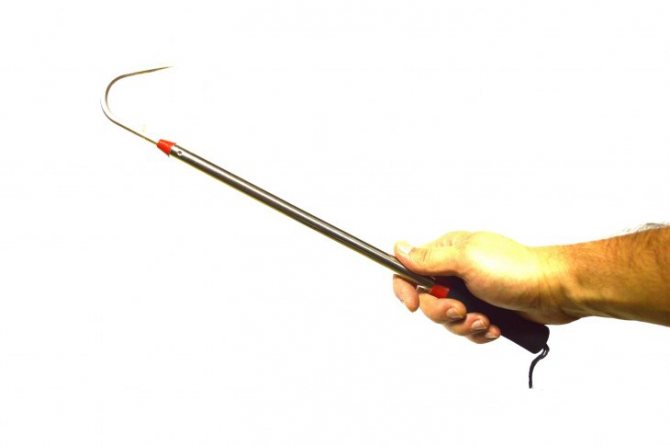
But it is best to fix the handle itself using two washers, welding them opposite each other. Here, too, you can make a small loop for the hand, which will also serve as a kind of fixation.
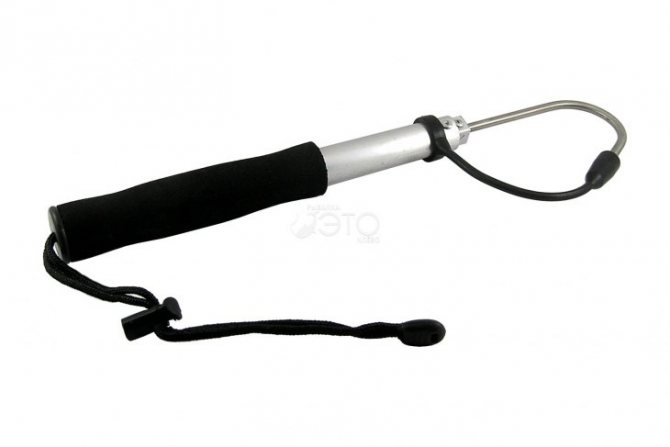
Hook device

The designs of hooks can be varied, but, as a rule, their general structure is the same. Any hook consists of the following components:
- Lever. Typically, the main material for making a hook handle is hard wood - maple, ash, oak, beech, birch, etc. The handle should be well sanded and painted with a water-repellent coating. It is better to use a primer as a coating, as it is rougher than enamel. The color of the primer should be chosen darker so that the gaff is better visible on snow or ice. Metal can also be used as a material. But this material is less practical due to its weight.
- Working part. The main working part of the hook is a metal hook, which, as a rule, consists of steel wire with a diameter of 5 mm or a large fishing hook for catfish.
Bagorik
After all, the slightest mistake is enough, and in the turmoil of fishing, such a possibility is not excluded, and a major problem can happen. A boat puncture threatens the fisherman with an unplanned swim, loss of time for repairs, and, in general, a spoiled mood. Therefore, where you can do without a hook, it is better not to arm yourself with it.
But when fishing with a spinning rod from the shore, a hook is necessary. And it would be nice if it had a longer handle.
A hook is also indispensable when fishing for large fish (including peaceful ones) from under the ice.
How to make a hook for ice fishing with your own hands
Of course, like any fishing accessory, a hook can be bought in a store, but making it yourself and thereby being confident in its reliability is a more acceptable option for a real fisherman.
So, what materials and accessories may we need to make a winter hook with our own hands:
- Wooden blank for a cylindrical handle 20-30 cm long with a diameter of 25 mm;
- Steel wire or pin with a diameter of 5 mm and a length of up to 1 m;
- Car clamps;
- 2 washers;
- Large catfish hook;
- Welding machine;
- Bulgarian;
- Drill;
- Dark wood primer.
Let's start making our hook with the handle. The handle can be attached to the working part in two ways:
- From the inside of our wooden workpiece, we drill a through hole along the workpiece with a diameter of 5 mm. We put a washer on one edge of the steel wire and weld it. Next, we put the workpiece and a second washer on the wire, which we also weld. Let's polish the weld marks with a grinder and our handle is ready.
- The second method of making a handle is less labor-intensive. At the end of the wire, a 1 cm long tip is bent at an angle of 90 degrees. A hole with a diameter of 5 mm is drilled in the workpiece at a distance of 5 cm from the edge. We apply the wire to the handle so that the bent end of the wire falls into the hole. We press the wire to the workpiece with two clamps and the handle is ready. Don't forget to coat it with primer.
Next, we proceed to processing the working part. As with the handle, there are two possible manufacturing options:
First option
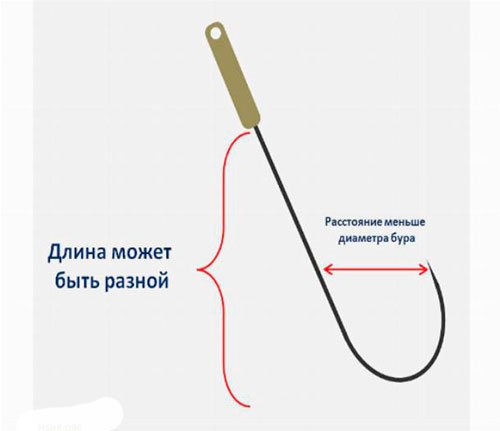
It simply means bending the wire. We measure the planned length of the hook. Typically, the length of a winter hook varies from 70 cm to 1 m. Next, we bend the wire with a bend radius of approximately 15 mm.
We leave a part after bending 70-80 mm and cut the rest with a grinder. We also use a grinder to sharpen the curved end. We sharpen the tip 4-5 cm long to a cone.
Second option
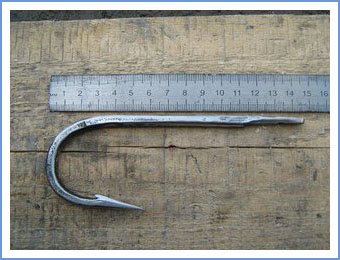
More labor-intensive and involves the use of a welding machine. Its essence lies in the fact that a large hook, such as is used for catfish, is welded to the end of the working part. We measure the planned length of the hook, subtract the length of the hook from it and cut it off with a grinder. Using a welding machine, we weld the hook to the working part. Use a grinder to clean up weld marks.
Sometimes anglers have a desire to make the hook more compact so that it fits in a fishing box. To do this, you can do this: saw the hook in half with a grinder. We cut threads on both sawn ends of the hook. We connect the ends with a coupling about 5 cm long.
Making a hook
Option 1 (using welding). A large catfish hook is welded to the end of the working part of the future hook. To do this, measure the required part of the wire, cut off the rest with a grinder, and weld a catfish hook to the edge. You can also use a grinder to clean up weld marks.
Option 2 (without the help of a welding machine). We measure the required length of the hook (from 70 to 80 cm will be more than enough), bend the rest, cut off the excess so that the length of the hook will be within 15 cm, then sharpen the edge to such a sharpness that the tip can scratch a nail, and The accessory is ready.
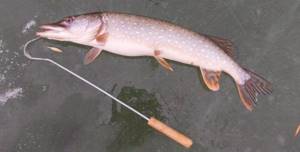
Types of hooks for fishing
Of course, in our modern times, the variety of fishing tackle and accessories is very large. The hook, as a fishing accessory, is no exception. In addition to the fact that they are divided into summer and winter, there is another classification of gaffs - transformable and non-transformable, that is, solid. Transformable subspecies include:
Folding hook
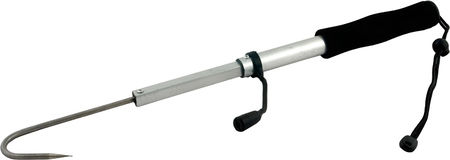
Lightweight and compact version of the hook. As a rule, it consists of two parts, which are connected to each other by hinges. It can be brought into working position very easily with the movement of one hand.
Flexible hook
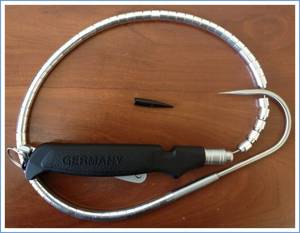
This option consists of many components that have an internal longitudinal hole and are made of lightweight stainless materials.
A steel cable with a diameter of about 3 mm runs inside these components. A tensioning device is installed on the handle - the cable is tensioned and the components take on a rigid and durable structure. This is one of the most expensive types of gaffs.
Telescopic hook
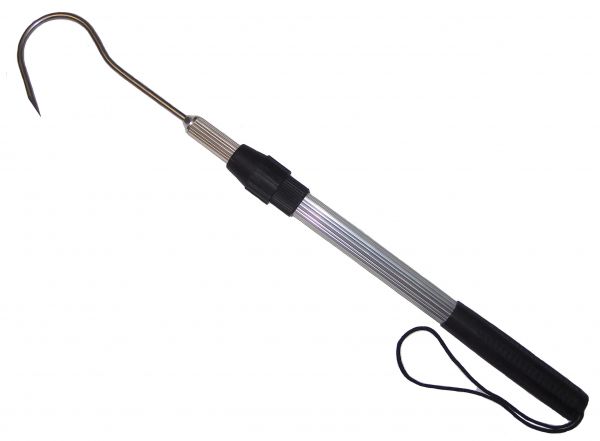
This version of the hook is good because it has a design that allows it to be held in any position. Sections can be extended completely or partially, as a result of which its length can be adjusted. As a rule, such hooks are summer options.
Kinds
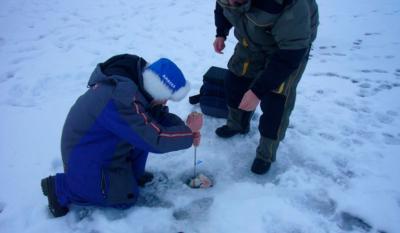
There are several main options for homemade (and store-bought ones too) hooks that fishermen choose to suit their taste:
- Folding - its main advantage is that it does not take up much space, it is usually made of 2 parts connected by a hinge or something else, but any number of folding parts can be made, as long as this does not compromise the strength of the structure.
- Flexible - this factory-made option is quite expensive, but you can make it yourself; the basis of the design is a flexible cable that is threaded through stainless steel rings.
- Telescopic is convenient and compact, but it is more often used in summer; in winter, water and frost quickly make the structure vulnerable.
- A pocket hook is the most convenient, since it can really fold down to pocket size, and it’s not very difficult to make.
There are other designs that may be more complex in terms of their components, but these are the ones most often used, and with success.
Rules for using a hook for winter fishing
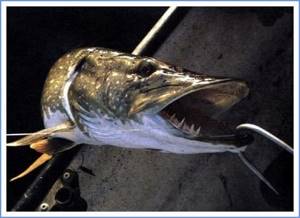
Of course, when there is a big fish on the hook, there is especially no time to think about how to use the hook correctly. You can’t waste a second, as the fish can get off the hook and get away. Nevertheless, there are some rules that can increase the likelihood of fish rising on the ice.
Let's list them:
- You need to remain calm and self-possessed; under no circumstances should you fuss or make unnecessary movements;
- The hook drops into the hole before the fish gets there;
- The place where the fish turns purple is the area of the front fins;
- The angler's movements should be as sharp and short as possible;
- If the fish is wider than the hole, then holding it with a hook, you need to widen the hole.
How to use a hook correctly?
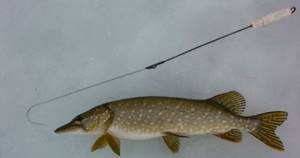
It is unlikely that anyone would think that this tool also needs to be used correctly. This is especially true for those moments when you already need to hook a large fish. At such moments, the fisherman forgets about everything, as well as about what needs to be done at this moment. And yet, there are some rules that will allow this operation to be carried out without losing fish. Here they are:
- At these moments you should not fuss, making sharp and ambiguous movements. Composure and calmness are the guarantee of successful fishing.
- The hook should be lowered into the hole until the fish appears there.
- The fish should be hooked in the area of the front fins.
- The angler's movements must be deliberate and quick.
If the fish does not fit into the hole, then the hole should be widened, holding the fish with a hook.
Pocket safety hook

In all centuries and times there has been no limit to the creativity of amateur fishermen. Let's give an example of a creative approach to making a hook.
To make such a hook we need:
- antenna from an old radio;
- several wine corks;
- large hook for catfish;
- some copper wire.
So, we take three or four wine corks. We make through holes in them along the plug with a diameter slightly smaller than the first elbow of the antenna. We put these plugs on the first leg of the antenna and the beautiful, elegant handle is ready.
We bite off the eye of the hook and solder the hook to the last elbow of the antenna, having previously cleaned the soldering area and treated it with acid. Next, we wrap the soldered hook with copper wire and re-solder this entire winding. The decorative and compact hook is ready for use.
Homemade hook.
I have long set out to make a hook that would be lightweight and fit into a winter box. Before that, there were long hooks - you had to fasten them to a drill, which is not very convenient. Buying from a store is also not an option - you would have to shorten them - why bother with unnecessary movements. I've had them lying around for a long time telescopic stands for fishing rods - that's what you need - I looked in the bins - I found handles and tubes and everything I needed for making - half a day and two hooks are ready. And now, in order:
I need a telescopic stand for a fishing rod - the handle can be made from any wood -or other dense material by drilling a hole along the diameter of the tube.
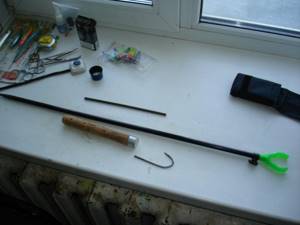
We bend the hook from a motorcycle knitting needle or elastic wire. I used the handle from an old spinning rod, having previously adjusted the hole to the diameter of the tube. Next, we cut everything to the required size
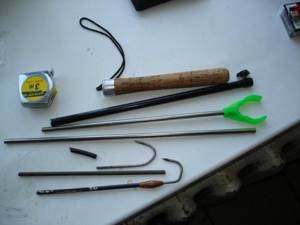
We drill a hole in the plug and pass the cord through, after placing the cambric inside, we knit it into a knot and burn it a little, then we put the plug on the handle with glue.
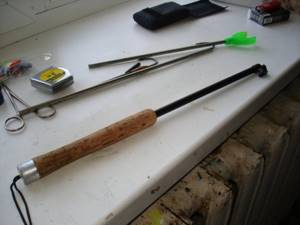
Next, we fix the hook in the retractable tube and the hook is ready.
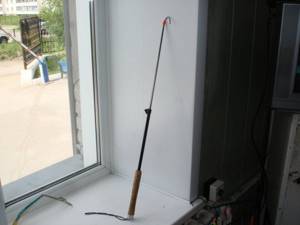
When folded, the length is 45 cm, when unfolded it is up to 80 cm - you can set the length within these limits to whatever you need - the screw securely fixes it.
I still have a short part of the tube left from the stand - I found a suitable tube for it from an old pendant lamp and a handle from a soldering iron - it would be a sin not to make another hook - smaller - so that it would fit into a small box. I drove one part of the tube with threads and holes for the wires into the handle and placed it on the glue - I drilled the blind clamping plug through the diameter of the retractable tube and on the side, after tightening it, I drilled a hole for the M4 thread
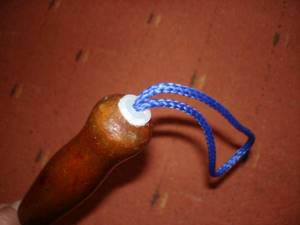
And then we refine the hooks - as best we can and everything is done. It took me about an hour to make the first one. The second one, taking into account the selection of materials, took a little more. I checked all the connections for rupture, but it was not possible to pull them out.
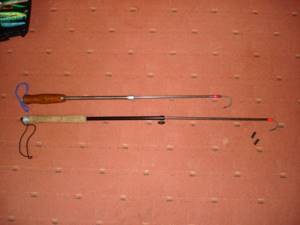
And be sure to make plugs on the tip from a thick-walled rubber tube.
You can use it even for winter fishing or summer fishing - it fits perfectly in any bag and does not take up much space. The weight is small 145 grams - which is larger than 200 grams, which is not particularly noticeable.
The hook is indispensable when fishing from a steep bank - you can drag it onto a flat bank. But this cannot be done on a step. Carrying a landing net with you is cumbersome and inconvenient - and the hook can be brought into working condition in a second and the trophy will not set sail to its native element.
Well, the price of the issue is 70 rubles for a stand + a minimum of hassle versus more than 400 for a store-bought one.
Device
For those who are still unfamiliar with this device, I explain that it is a sharp hook on the handle. The hook is usually made of steel wire with a diameter of 5÷8 mm. The main requirement for the design is a very sharp tip. The handle of the hook can be made of wood, bamboo, or metal. It shouldn't bend. The length of the handle of the hook used for fishing in the summer season ranges from one to one and a half meters. For structures used in winter, the length of the handle is shorter, about 50 centimeters. To prevent the hook from jumping out of the hand during a sudden movement, in the place of the girth, in its upper part, it is necessary to make a thickening or a loop to secure the hand. For convenient transportation, the hook can be equipped with a leather strap. This device is sold together with a cover.

